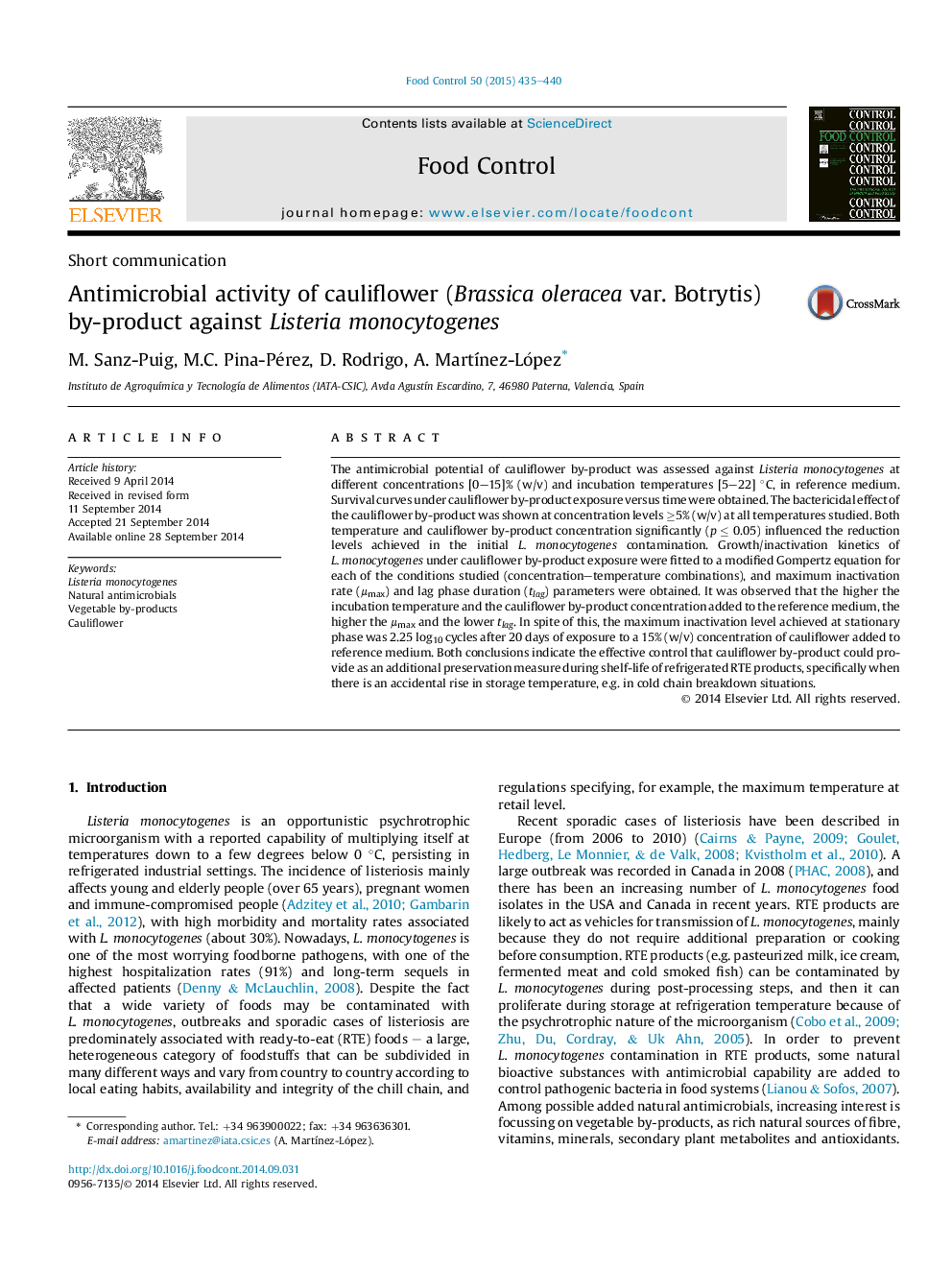| کد مقاله | کد نشریه | سال انتشار | مقاله انگلیسی | نسخه تمام متن |
|---|---|---|---|---|
| 6391049 | 1628412 | 2015 | 6 صفحه PDF | دانلود رایگان |

- Cauliflower by-product antimicrobial potential was studied against L. monocytogenes.
- T(°C) and cauliflower addition (%) effect was studied on L. monocytogenes reduction.
- L. monocytogenes was reduced a maximum of 2.25 log cycles with of 15% cauliflower.
- The higher by-product concentration and temperature, the greater μmax values.
- The higher by-product concentration and temperature, the lowest tlag values.
The antimicrobial potential of cauliflower by-product was assessed against Listeria monocytogenes at different concentrations [0-15]% (w/v) and incubation temperatures [5-22] °C, in reference medium. Survival curves under cauliflower by-product exposure versus time were obtained. The bactericidal effect of the cauliflower by-product was shown at concentration levels â¥5% (w/v) at all temperatures studied. Both temperature and cauliflower by-product concentration significantly (p â¤Â 0.05) influenced the reduction levels achieved in the initial L. monocytogenes contamination. Growth/inactivation kinetics of L. monocytogenes under cauliflower by-product exposure were fitted to a modified Gompertz equation for each of the conditions studied (concentration-temperature combinations), and maximum inactivation rate (μmax) and lag phase duration (tlag) parameters were obtained. It was observed that the higher the incubation temperature and the cauliflower by-product concentration added to the reference medium, the higher the μmax and the lower tlag. In spite of this, the maximum inactivation level achieved at stationary phase was 2.25 log10 cycles after 20 days of exposure to a 15% (w/v) concentration of cauliflower added to reference medium. Both conclusions indicate the effective control that cauliflower by-product could provide as an additional preservation measure during shelf-life of refrigerated RTE products, specifically when there is an accidental rise in storage temperature, e.g. in cold chain breakdown situations.
Journal: Food Control - Volume 50, April 2015, Pages 435-440